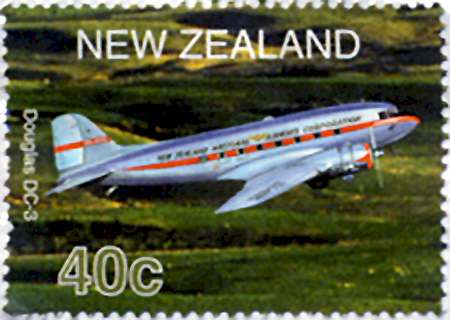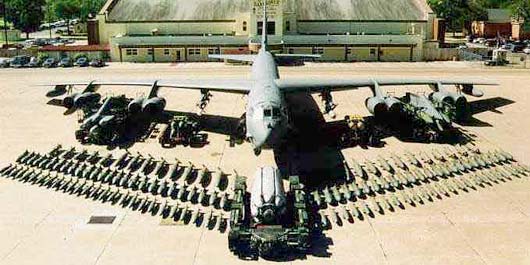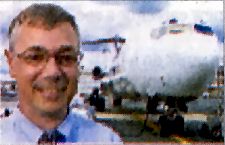Practically Legends
Men, Machines and MachinationsIt was the first airplane... that could make money just by hauling passengers. - C R Smith, president of American Airlines regarding the DC-3, I came to admire this machine which could lift virtually any load strapped to its back and carry it anywhere in any weather, safely and dependably. The C-47 groaned, it protested, it rattled, it leaked oil, it ran hot, it ran cold, it ran rough, it staggered along on hot days and scared you half to death, its wings flexed and twisted in a horrifying manner, it sank back to earth with a great sigh of relief - but it flew and it flew and it flew. - Len Morgan
Douglas DC-3: Began service in 1936; Wingspan 95'; Length 64' 5"; Cruise speed 183 - 207 mph by K B Leighton Review of the book DC-3 Southern Skies Pioneer by Brian Lockstone and Paul Harrison The story of the DC3 in New Zealand reflects the social and economic history of the country itself. The first of these aircraft flew in 1934 and they made an outstanding contribution to the Second World War and then to the era of mass transportation by air. About 25,000 DC-3s were built. Of those, the RNZAF had 49, and 42 were on our civil register. The book gives technical specifications of the aircraft, but is less concerned with the machine itself than with the uses to which it was put - all in all a collection of tales about men, machines and machinations. When hostilities ceased the RNZAF was given charge of running a commercial airline till legislation created the National Airways Corporation (NAC) and determined the demarcation of routes with TEAL now Air New Zealand. The numbers of aircraft available under lend lease was reviewed because the efficiency of the RNZAF meant competition against the Americans' intention to restart commercial operations themselves. Some New Zealand DC-3s amassed phenomenal flying hours. ZK-BQK totalled 50,345. Some of the highly reliable Pratt & Whitney engines completed over 20,000 hours. It sent shivers down my spine to read of the incredible long distance flights carried out over water during and after the War. Flights that nowadays take 4 hours by jet could take up to 4 days, including refuelling, stopovers and the use of manual navigation techniques. Maintenance and aircrew training of the highest order resuilted in a fine safety record. Wartime created enormous confidence in Kiwis to do anything and go anywhere. Some of these tendencies had later to be restrained to align with realities. But they kept resurfacing as independent operators tried to make the government live up to its free market promises. The jet age, maintenance costs and fuel costs (after the oil shocks) spelt the end of the DC-3 era. Former New Zealand DC-3's went to Laos, the Netherlands Antilles or (refitted with turboprop engines) to the South African Air Force. This book is a great read for the aviation enthusiast and the general reader. Its many photographs in black and white and a centre section in colour show the venerable old bird in all her glory. Source: Wellington's City Voice date undenoted - perhaps sometime in 2000? -------- Original Message -------- Comments: Fascinating Site. With regard to the DC-3, we in NZ also used them to aerial topdress farms with superphosphate. Fieldair was the mob I worked for that did this, but it was the end of the line for the airframes. We were based in Palmerston North (and also flew 2 Lodestars until one went into the sea approaching Napier) and Beavers - took 5 ton at a time they did. Brian
See the Wind Blow
It's spruce-up time for the world's largest weathervane. Source: www.yukonweb.com Yukon News Wednesday 29 July 1998 See also:
I have a more-than-passing interest in the DC-3 and all the other planes made by Douglas Aircraft as our much-loved motor launch, Lady Fair (the one that brought us safely from California to New Zealand through some horrific weather) was built by Donald Douglas in 1960. All the tools in the engine room were engraved with his initials. Several parts on the boat (such as the autopilot) were not marine parts at all, but aircraft parts. We had a stack of photos of him taken with the boat as she was being built, launched, and enjoyed. Our boat gave us great service - in regards to reliability she was the DC-3 equivalent on the sea - except that she was absolutely one-of-a-kind.
Made to Kill: the B-52
One of SAC's Boeing B-52 bombers with its full armament. Source: www.nebraskastudies.org
JumboOf all the inventions of which it is possible to conceive in the future, there is none which so captivates the imagination as that of a flying machine. The power of rising up into the air and rushing in any direction desired at the rate of a mile or more in a minute is a power for which mankind would be willing to pay very liberally. What a luxurious mode of locomotion! To sweep along smoothly, gracefully, and swiftly over the treetops, changing courses at pleasure, and alighting at will. How perfectly it would eclipse all other means of travel by land and sea! This magnificent problem, so alluring to the imagination and of the highest practical convenience and value, has been left heretofore to the dreams of a few visionaries and the feeble efforts of a few clumsy inventors. We, ourselves, have thought that, in the present state of human knowledge, it contained no promise of success. But, considering the greatness of the prize and the trifling character of the endeavours which have been put forth to obtain it, would it not indeed be well, as our correspondents suggest, to make a new and combined effort to realise it, under all the light and power of modern science and mechanism?... The simplest, however, of all conceivable flying machines would be a cylinder blowing out gas in the rear and driving itself along on the principle of the rocket... We might add several other hints to inventors who desire to enter on this enticing field, but we will conclude with only one more. The newly discovered metal aluminium, from its extraordinary combination of lightness and strength, is the proper material for flying machimes. - Scientific American 8 September 1860 by Vaclav Smil The revolutionary machine that shrank the world
The Boeing 747 was developed at the urging of Juan Trippe, founder and then president of Pan American World Airways (Pan Am). It was neither the first airliner powered by gas turbines nor the first successful intercontinental jet: the ill-fated British 106 Comet 1 presaged the jet age in 1952, and it began in earnest in 1958, with the redesigned 106 Comet 4 and Boeing 707. William Allen, Boeing's boss, gambled the company's future by investing more than twice its worth to build the world's largest passenger jet. The wide body (to allow for two standard ship containers to be placed side-by-side) and the bubble cockpit (for easy loading through an upturned nose) betray the ultimate design intent: in the late 1960s it was expected that supersonic jets would soon dominate all long routes, and 747s would become cargo carriers. That never happened - but the 747, rather than being just another compromise, turned out to be, in the engineer Henk Tennekes' memorable description, the only plane that obeys ruthless engineering logic. To accomplish this, Boeing had to overcome a string of design and financial crises brought about by the ambitious construction schedule, and Pratt & Whitney had to develop the first giant commercial turbofan engines. Incredibly, the prototype took off on 9 February 1969, less than three years after Pan Am ordered its 25 747s. The first scheduled flight on 21 January 1970 came back to the gate after an engine overheated during taxiing; more than five hours later a back-up plane finally left New York for London. If only the company's troubles had ended there! During the past three decades, Boeing has seen massive cyclical layoffs, strikes, productivity problems, plummeting stock prices and, most recently, a fierce competition with Airbus, whose smaller and slower A340 has a longer range than the 747, and whose planned super-jumbo A380 is to carry 550-650 people. And Pan Am is not even around any more. But the accomplishment remains. There are successful companies that produce little of lasting value; and there are troubled, or defunct, enterprises whose daring and vision have changed the world. The Boeing 747 is an icon and a favourite of the jet age. In 1988 came the first redesigned version, the 747-400: passengers do not see the less cluttered digital avionics and programmable displays in the two-crew cockpit, but they can feel the power of new high-bypass turbofan engines, they can see the cruising speed on their monitors closing on 0.9 Mach, and as many as 524 of them can fly nonstop at the edge of the stratosphere from Vancouver to Hong Kong, or from Singapore to London. The 1,000th 747 was delivered on 12 October 1993, and the count passed 1,230 at the beginning of 2000. So far, the Queen of the Skies - or, more affectionately, the Big Top or Fat Albert - has carried more than two billion passengers, equal to nearly 40% of humanity. Her size, range, speed and economy have made intercontinental flight routine, with steadily declining real costs, as tens of millions of people go to family reunions, business meetings or beaches, and billions of dollars of electronic goods, flowers, clothes and toys move to rapidly changing markets. The growing integration of the global economy in general, and Asia's economic rise in particular, have been closely tied to the international fleet of 747s. The Boeing 747 combines symbolism and function, beauty and economy: a daring, revolutionary design that has become a powerful symbol of global civilisation, an improbably graceful behemoth that ushered in the age of mass intercontinental travel, its allure has not faded after three decades of unprecedented service. Next time you are at a large international airport, find a gate with a 747. Then stand, childlike, with your face against the glass right in front of the plane's huge rounded nose, note the four massive four-wheel bogies, look up at the bubble topping the fuselage, check the enormous engines mounted on a gently arched, variably cambered wing, and sweep to its end where an upturned winglet makes it easy to identify the most modern 747-400 series. Like a Gothic cathedral or a high-flying flock of Canada geese, the 747 is an object of undeniable beauty, graceful daring and irresistible awe. How can that thing fly? How that thing can fly! Vaclav Smil is at the University of Manitoba, Winnipeg, Manitoba R3T 2N2, Canada Source: Nature vol 406 20 July 2000
Weird Airport Name? Newark Isn't AloneThere's nothing like an airport for bringing you down to earth. - Richard Gordon by Al Frank
One of the most frequently asked question is the significance of Newark International Airport's identifier: why not use NWK? The answer is the Navy has dibs on all Ns, according to the Federal Aviation Administration, which now oversees the three-letter codes in the US. Back when airports were few, identifiers were just two letters, normally the radio call signs of the weather stations located on the fields. As the number of airports grew, three letters were introduced in the 1930s because they were deemed capable of handling more than 17,000 combinations. Still, the N's remain off limits - at least in the U S. (NRK belongs to Norrkoeping Airport in Sweden. Tokyo's Narita airport is NRT.) In having a nondescript moniker, Newark is hardly alone. Other names that might bring a question mark: ORD for Chicago O'Hare International. That's a leftiover from its incarnation as an Air National Guard field in Orchard, a Chicago suburb. Orlando, Florida's, MCO has its roots in McCoy Air Force Base while Cincinnati is CVG for Covington, Kentucky, the town where Cincinnati/Northern Kentucky International Airport is actually located. Meanwhile, creativity came into play for other N-towns. Norfolk, Virginia, is ORF while New Orleans is MSY for aviation pioneer John Moisant. How Newark wound up with EWR is something even airport historian Dave Morris said he never quite nailed down. And it isn't likely to change. The FAA estimates a switch can cost the airline industry in excess of $7 million to reprogram computers and modify schedules, invoices and baggage claim tickets.
The switch was welcomed by Austin Tobin, the legendary executive director of the Port Authority, which built and runs the airport for New York. Tobin always detested the IDL identifier, grousing the nation's premier gateway "was neither idle, nor wild." AI Frank covers Newark Airport. His column appears on Tuesdays and Thursdays. He may be reached at at afrank@starledger.com Source: The Star-Ledger Tuesday 14 August 2001 photo credit: Tony Kurdzuk
To view other articles related to flying including history, unusual flying machines, hot air balloons, skydiving, gliding, problems, airports, turbulence, pilots, crashes, the
Paris Air Show, the future, blimps, space travel, solar sails and more, clicking the "Up" button below takes you to the Table of Contents for this section on Flight. |
 Animals
Animals Animation
Animation Art of Playing Cards
Art of Playing Cards Drugs
Drugs Education
Education Environment
Environment Flying
Flying History
History Humour
Humour Immigration
Immigration Info/Tech
Info/Tech Intellectual/Entertaining
Intellectual/Entertaining Lifestyles
Lifestyles Men
Men Money/Politics/Law
Money/Politics/Law New Jersey
New Jersey Odds and Oddities
Odds and Oddities Older & Under
Older & Under Photography
Photography Prisons
Prisons Relationships
Relationships Science
Science Social/Cultural
Social/Cultural Terrorism
Terrorism Wellington
Wellington Working
Working Zero Return Investment
Zero Return Investment


 The Boeing 747 was the first wide-bodied long-range jet - but this terse description does not do
justice to a plane which most flight aficionados see as the best jetliner ever built. As it takes off for an intercontinental flight that will last more than 12 hours, a
fully loaded 747-400, the latest in the jumbo series, weighs close to 400 tonnes, the equivalent of more than six of the stubby, short-range 737-500s. About 40% of its mass
is jet fuel, and its four engines, mounted on wings spanning more than 64 metres, deliver a peak combined thrust of almost 112,000 kg, equal to about 280 MW of power.
The Boeing 747 was the first wide-bodied long-range jet - but this terse description does not do
justice to a plane which most flight aficionados see as the best jetliner ever built. As it takes off for an intercontinental flight that will last more than 12 hours, a
fully loaded 747-400, the latest in the jumbo series, weighs close to 400 tonnes, the equivalent of more than six of the stubby, short-range 737-500s. About 40% of its mass
is jet fuel, and its four engines, mounted on wings spanning more than 64 metres, deliver a peak combined thrust of almost 112,000 kg, equal to about 280 MW of power. Okay, so what is it with this "EWR" you see on luggage claim checks and airline schedules
around Newark airport?
Okay, so what is it with this "EWR" you see on luggage claim checks and airline schedules
around Newark airport? One major instance of an identifier being changed came in 1964, when New
York International was renamed John F Kennedy International, a year after the 35th president's assassination. Before JFK, it was IDL for Idlewild; the golf course once
located nearby.
One major instance of an identifier being changed came in 1964, when New
York International was renamed John F Kennedy International, a year after the 35th president's assassination. Before JFK, it was IDL for Idlewild; the golf course once
located nearby.